When a bonsai hasn’t been repotted in a while, the broken down soil and roots can fill most of the gaps between soil particles and make for a compacted root ball.
It’s hard to keep bonsai healthy when water doesn’t move through the soil well, so the goal for repotting a tree with compacted roots is to make space for water, air, and eventually new roots to move through the root ball.
Here’s what this work looks like on a medium-size Sierra juniper.
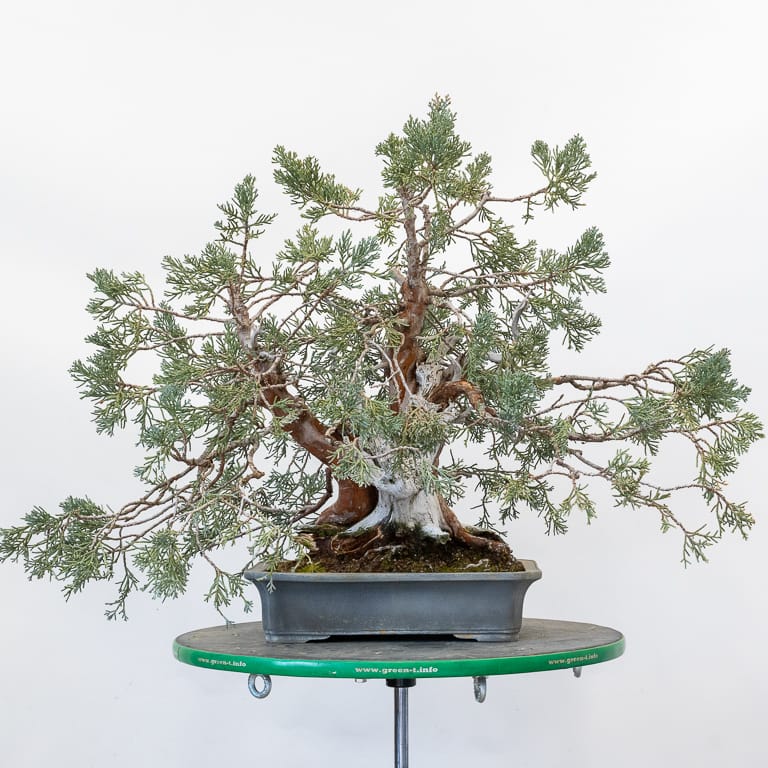
Sierra juniper
When I took the tree out of the pot, I found some new roots growing along the sides of the root ball.
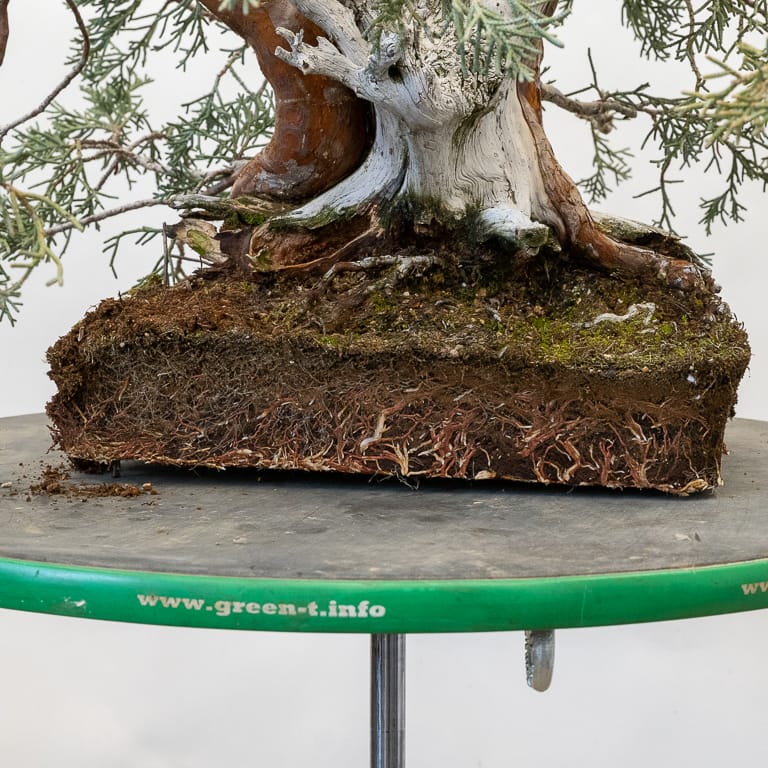
A few new roots
I started work on the bottom of the root ball. From what I could tell, the soil was a mix of pumice, lava rock, and akadama.
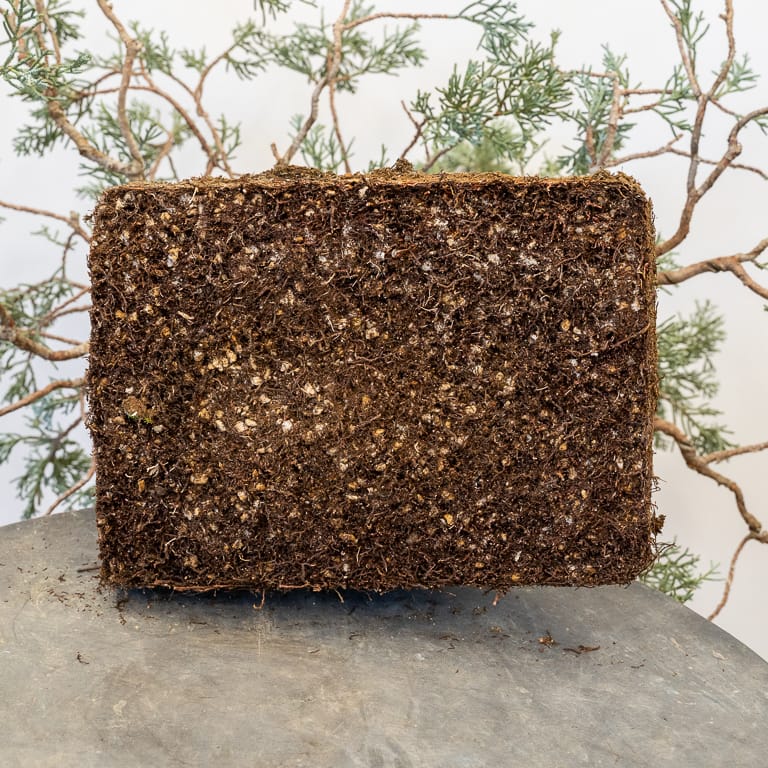
After trimming the bottom of the root ball
Next, I did similar work on the sides and top of the root ball.
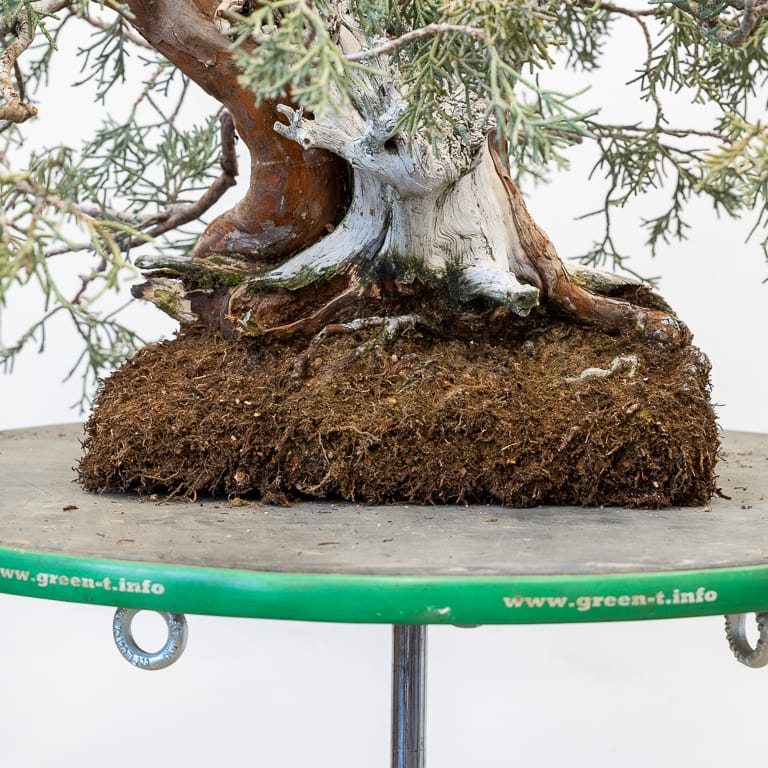
After removing the outer layer of roots
Good root work had been done in the past, so there were few crossing or other roots that needed to be removed. Two that caught my attention had likely grown since the tree was last repotted. I removed them as they were growing parallel to the trunk instead of radiating away from it.
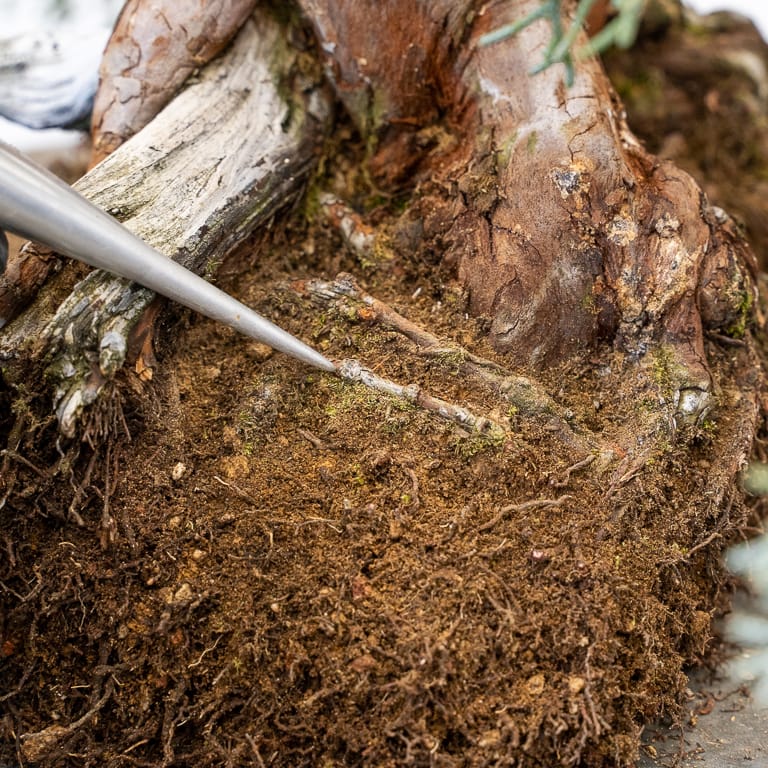
Two surface roots to be removed
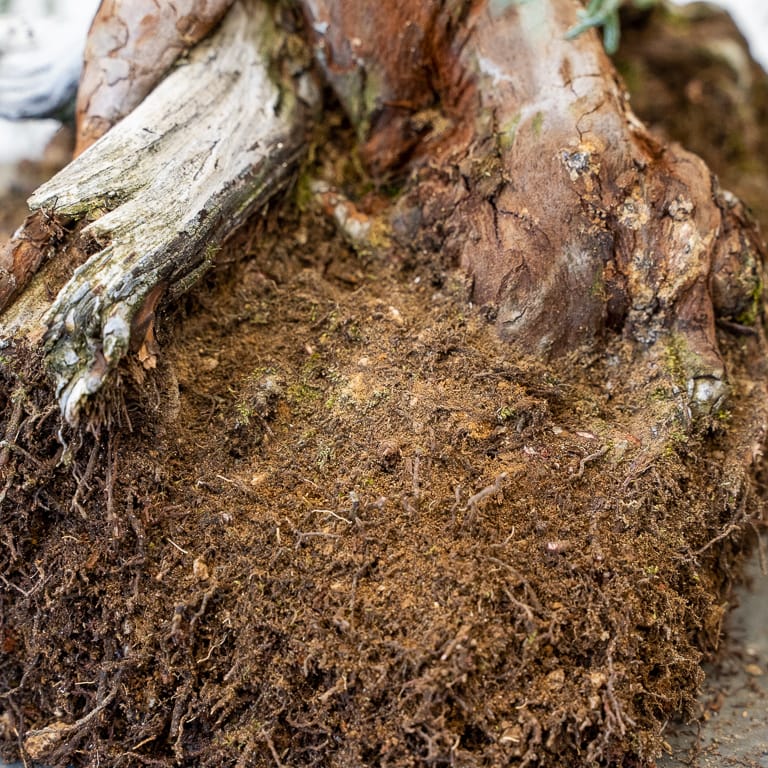
After removing the surface roots
Because the root ball was so compacted, I made a few holes that I could fill with new soil.
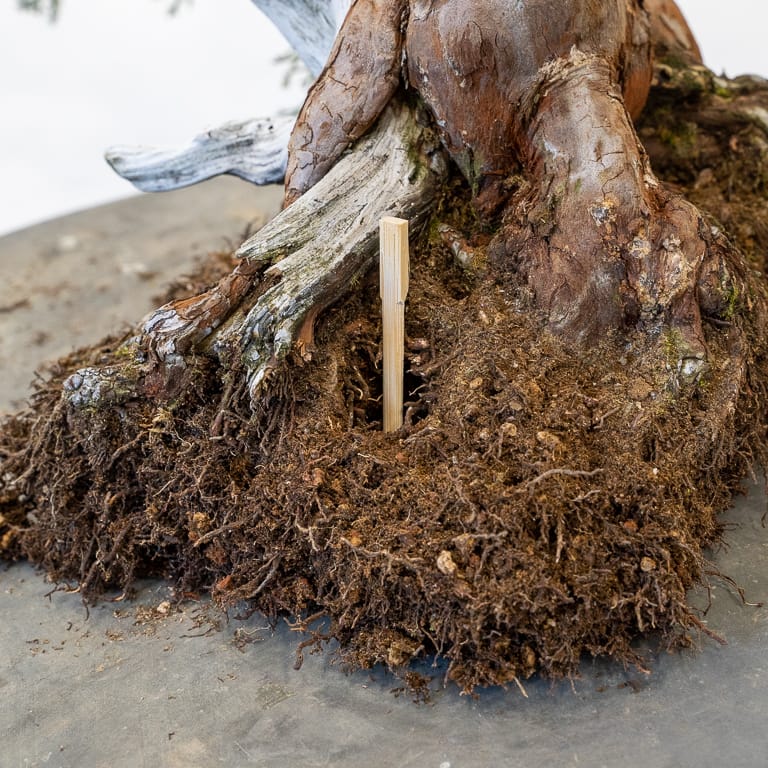
Chopstick marking a hole in the root ball
I then loosened up the rest of the root ball by perforating it with an old screwdriver.
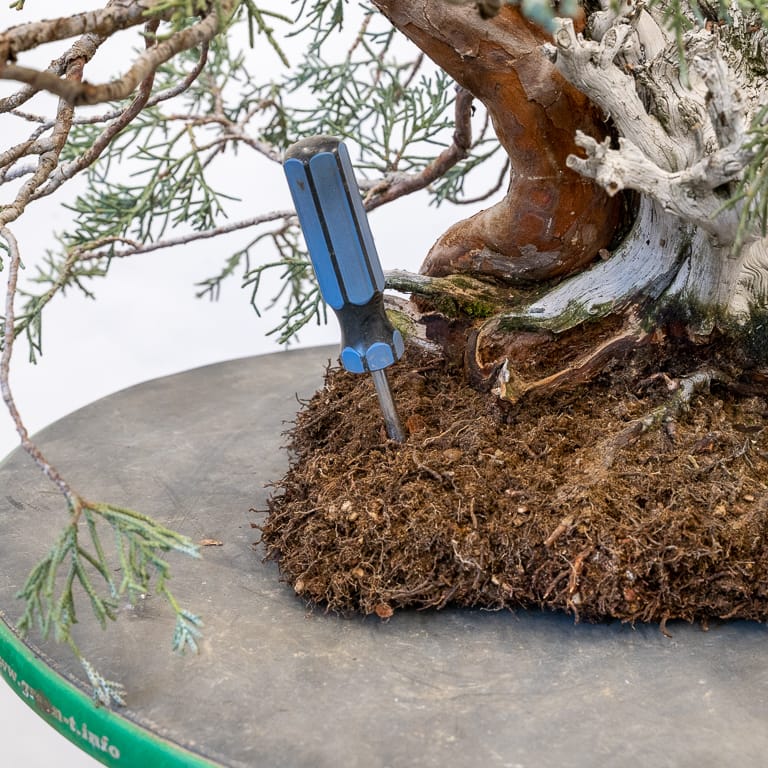
Perforating the root ball
Loosening the soil like this makes it easy for water to reach the roots in the interior of the root ball and helps encourage new roots to grow throughout the pot.
I secured the tree by inserting two chopsticks into the root ball and tying them down with aluminum wire.
This approach is great when the root ball is solid but isn’t as effective for bare-rooted trees or circumstances where the root ball is flexible.
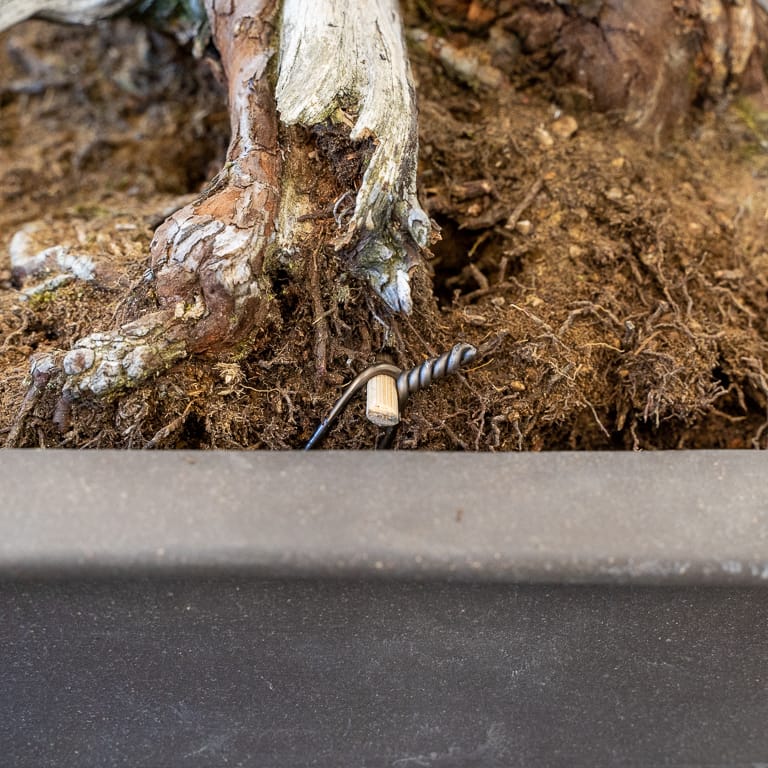
Simple tie-down technique
I selected a slightly deeper pot to help the tree establish new roots.
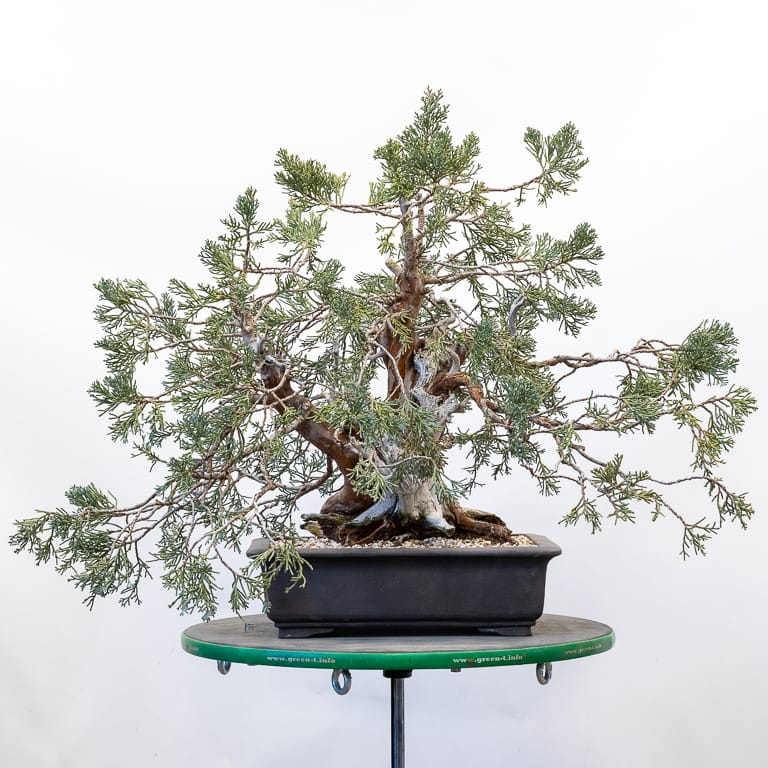
Sierra juniper – 24″
I can start working on the branches when the tree is established in the new container. This might be as soon as fall or winter, but I’ll wait until I see ample new growth before cutback or wiring.
Subscribe to Bonsai Tonight
New Posts Delivered Every Tuesday and Friday
Matt Filchak says
Beautiful tree
Jonas Dupuich says
Thanks, Matt!
Rsy says
Love it and looking forward to design phase
Jonas Dupuich says
Thanks, Ray – I’m looking forward to that phase too!
Doug Zeeff says
Jonas, I am confused. By going to a deeper pot aren’t you encouraging the roots to grow down instead of radially? I have always tried to keep the roots as shallow as possible and then be able to use a shallower pot. Thanks for another great article.
Jonas Dupuich says
Thanks, Doug! The previous pot was a little small for the tree. The idea is to give the tree more space while it regains vigor so it will respond well when it’s time for more significant cutback.
As for the lateral roots, this is less important for junipers as we don’t typically see a lot of surface roots on junipers. The roots that grow the the bottom of the pot are typically fairly small and can be reduced when it’s time for a smaller pot again.
Ben says
OLD screwdriver. Check! Up to today I was making a mixstake of using a NEW screwdriver! That must be it! By using an old one, bonsai grow better! Thanks for a great tip!
B.
Jonas Dupuich says
Ha, I’ll have to try it with a new screwdriver – it’s good to keep up with the times! Thanks for the note Ben.
D Van G says
Was this repotted in March 2021, this month?
Jonas Dupuich says
Yes, it was repotted on March 15th.
Brian Conway says
Jonas,
Great technical insight and knowledge… Terrific illustration and conveyance of the subject matter! Thanks as always
bcon87@comcast.net
Jonas Dupuich says
Thanks, Brian!